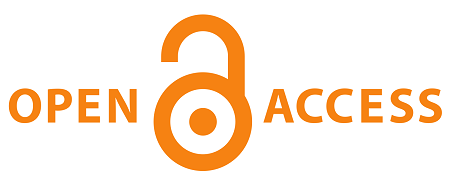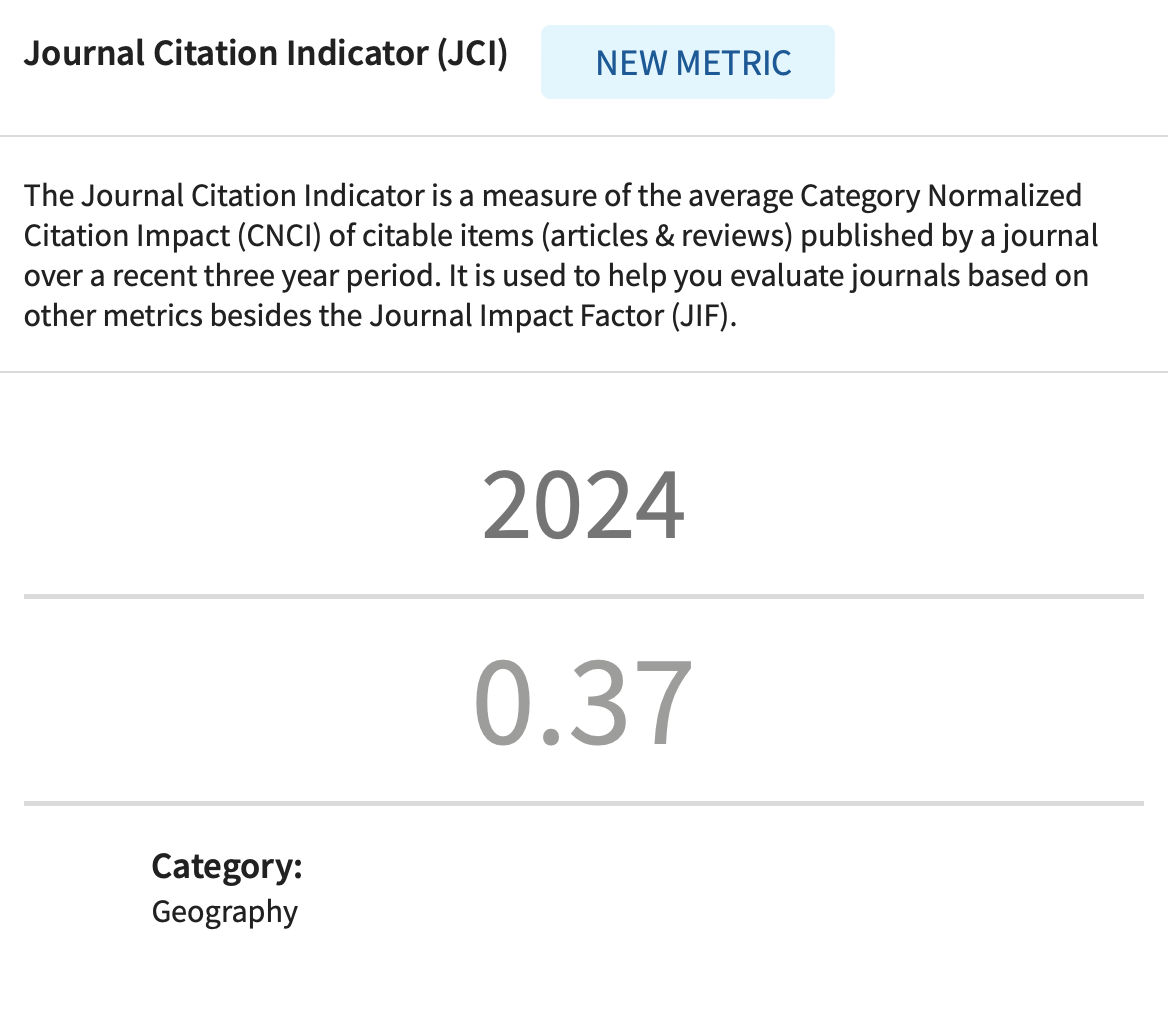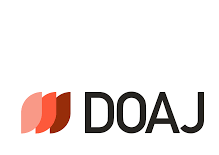THE IMPACT OF LIVELIHOOD ASSETS ON THE INCOME AND ENVIRONMENTAL AWARENESS OF HOUSEHOLD TOURISM IN SOUTHWEST VIETNAM
DOI:
https://doi.org/10.2298/IJGI2501105BAbstract
The research explores the relationship between livelihood assets (human, natural, financial, physical, and social) and livelihood outcomes such as income and environmental awareness (EA) in household tourism in the Mekong Delta. The research employed quantitative and qualitative approaches, and samples were collected through questionnaires from household-scale tourism businesses in five districts of Can Tho province using a simple random sampling method. The partial least squares structural equation modelling (PLS-SEM) is applied to analyze the cause-and-effect relationships between livelihood assets and outcome variables. The findings reveal that “Social assets” has the most significant positive impact on household tourism income, while “Physical assets” notably enhance EA. “Human assets” also play a crucial role in income generation, while “Financial assets” and “Natural assets” have a minimal influence on these outcomes. The study suggests that strengthening social networks, investing in eco-friendly physical assets, and enhancing human assets through training and development can promote sustainable household tourism. Significantly, it is recommended that future research refine the sustainable livelihood framework (SLF) model by incorporating external factors like policies, institutions, and community dynamics to capture the complexities of household tourism better.
Article metrics
References
Aazami, M., & Shanazi, K. (2020). Tourism wetlands and rural sustainable livelihood: The case from Iran. Journal of Outdoor Recreation and Tourism, 30, Article 100284. https://doi.org/10.1016/j.jort.2020.100284
Amato, F., Castiglione, A., De Santo, A., Moscato, V., Picariello, A., Persia, F., & Sperlí, G. (2018). Recognizing human behaviours in online social networks. Computers & Security, 74, 355–370. https://doi.org/10.1016/j.cose.2017.06.002
Angelsen, A., Larsen, H. O., Lund, J. F., Smith-Hall, C., & Wunder, S. (Eds.). (2011). Measuring Livelihoods and Environmental Dependence: Methods for Research and Fieldwork. Earthscan. https://doi.org/10.17528/cifor/003341
Ansoms, A., & McKay, A. (2010). A quantitative analysis of poverty and livelihood profiles: The case of rural Rwanda. Food Policy, 35(6), 584–598. https://doi.org/10.1016/j.foodpol.2010.06.006
Anup, K. C., & Thapa Parajuli, R. B. (2014). Tourism and its impact on livelihood in Manaslu conservation area, Nepal. Environment, Development and Sustainability, 16(5), 1053–1063. https://doi.org/10.1007/s10668-013-9512-7
Argaw, T., Abi, M., & Abate, E. (2022). The impact of watershed development and management practices on rural livelihoods outcome: A structural equation modeling study in central highlands of Ethiopia. Cogent Food & Agriculture, 9(1), Article 2243107. https://doi.org/10.1080/23311932.2023.2243107
Ashley, C., & Carney, D. (1999). Sustainable livelihoods: Lessons from early experience. Department for International Development. https://www.cabidigitallibrary.org/doi/full/10.5555/-20013056627
Bramwell, B., & Lane, B. (1993). Sustainable Tourism: An Evolving Global Approach. Journal of Sustainable Tourism, 1(1), 1–5. https://doi.org/10.1080/09669589309450696
Chambers, R. (1988). Sustainable livelihoods, environment and development: putting poor rural people first. Institute of Development Studies. https://shorturl.at/zQRn8
Chuyên, T. T. T. K., & Thi, H. H. K. (2013). Khả năng tiếp cận tài sản sinh kế của hộ nông dân Khmer vùng ven đô trong chiến lược sinh kế bền vững: trường hợp tại quận Ô Môn–TP. Cần Thơ [Access to livelihood assets of peri-urban Khmer farming households in a sustainable livelihood strategy: A case study in Ô Môn District, Cần Thơ City]. In 7th Conference on National Geography (pp. 653–660). Thai Nguyen Publishers. https://doi.org/10.13140/RG.2.2.13373.46568
Chương, H. N., & Hải, N. C. (2022). Ảnh hưởng của vốn xã hội và biến đổi khí hậu đến di cư ở khu vực nông thôn Việt Nam [The impact of social capital and climate change on migration in rural Vietnam]. Journal of Finance – Marketing Research, 1–12. https://doi.org/10.52932/jfm.vi71.313
Dang, X., Gao, S., Tao, R., Liu, G., Xia, Z., Fan, L., & Bi, W. (2020). Do environmental conservation programs contribute to sustainable livelihoods? Evidence from China's grain-for-green program in northern Shaanxi province. Science of The Total Environment, 719, Article 137436. https://doi.org/10.1016/j.scitotenv.2020.137436
Department for International Development (DFID). (1999). Sustainable livelihoods guidance sheets. https://worldfish.org/GCI/gci_assets_moz/Livelihood%20Approach%20-%20DFID.pdf
Department of Natural Resources and Environment. (2023). Administrative map (VN2000 coordinate system). GIS Portal Can Tho. [Online map]. https://gisportal.cantho.gov.vn/maps/web/kg/07ced12d-5e9d-4c87-a069-f0b94e22d0f2/0/home
Du, B., Zhen, L., Yan, H., & De Groot, R. (2016). Effects of Government Grassland Conservation Policy on Household Livelihoods and Dependence on Local Grasslands: Evidence from Inner Mongolia, China. Sustainability, 8(12), Article 1314. https://doi.org/10.3390/su8121314
General Statistics Office of Vietnam. (2023). Kết quả chủ yếu điều tra biến động dân số và kế hoạch hóa gia đình thời điểm 01/4/2023 [Main results of the population change and family planning survey as of April 1, 2023]. https://www.gso.gov.vn/wp-content/uploads/2024/12/Sach-BCBDDS_2023-Can2_compressed.pdf
Goodwin, H. (1998). Sustainable Tourism and Poverty Elimination. DFID/Department for the Environment, Transport and the Regions. https://haroldgoodwin.info/resources/dfidpaper.pdf
Government of Vietnam. (2016). Phê duyệt Quy hoạch tổng thể phát triển du lịch vùng Đồng bằng sông Cửu Long đến năm 2020, tầm nhìn đến năm 2030 [Approving the master plan for tourism development in the Mekong Delta region until 2020, with a vision to 2030]. https://datafiles.chinhphu.vn/cpp/files/vbpq/2016/11/2227.signed.pdf
Government of Vietnam. (2017). Về phát triển bền vững Đồng bằng sông Cửu Long thích ứng với biến đổi khí hậu [On sustainable development of the Mekong Delta adapting to climate change]. https://datafiles.chinhphu.vn/cpp/files/vbpq/2017/12/120.signed.pdf
Gursoy, D., & Rutherford, D. G. (2004). Host attitudes toward tourism: An improved structural model. Annals of Tourism Research, 31(3), 495–516. https://doi.org/10.1016/j.annals.2003.08.008
Hair, J. F., Sarstedt, M., Hopkins, L., & G. Kuppelwieser, V. (2014). Partial least squares structural equation modeling (PLS-SEM) An emerging tool in business research. European Business Review, 26(2), 106–121. https://doi.org/10.1108/EBR-10-2013-0128
Hall, D., Kirkpatrick, I., & Mitchell, M. (Eds.). (2005). Rural Tourism and Sustainable Business (Vol. 26). Channel View Publications. https://shorturl.at/H9fzi
Hardy, A., Beeton, R. J. S., & Pearson, L. (2002). Sustainable Tourism: An Overview of the Concept and its Position in Relation to Conceptualisations of Tourism. Journal of Sustainable Tourism, 10(6), 475–496. https://doi.org/10.1080/09669580208667183
Hoang, D. M. T. (2015). Acting together: How rural tourism can promote sustainable human development. Journal of Business and Economics, 6(3), 607–612. https://doi.org/10.15341/jbe(2155-7950)/03.06.2015/018
Huynh, V. D., & Piracha, A. (2019). An evaluation on climate change adaptation for tourism sector in the Mekong Delta of Vietnam. Asia Pacific Journal of Tourism Research, 24(9), 894–911. https://doi.org/10.1080/10941665.2019.1653338
Islam, G. M. N., Yew, T. S., & Viswanathan, K. K. (2014). Poverty and livelihood impacts of community based fisheries management in Bangladesh. Ocean and Coastal Management, 96, 123–129. https://doi.org/10.1016/j.ocecoaman.2014.05.004
Kimengsi, J. N., Kechia, M. A., Azibo, B. R., Pretzsch, J., & Kwei, J. (2019). Households’ Assets Dynamics and Ecotourism Choices in the Western Highlands of Cameroon. Sustainability, 11(7), Article 1844. https://doi.org/10.3390/su11071844
Kock, N., & Hadaya, P. (2018). Minimum sample size estimation in PLS‐SEM: The inverse square root and gamma‐exponential methods. Information Systems Journal, 28(1), 227–261. https://doi.org/10.1111/isj.12131
Krantz, L. (2001). The Sustainable Livelihood Approach to Poverty Reduction: An Introduction. Swedish International Development Cooperation Agency. https://shorturl.at/DJ5Ql
Lê, T. T. Q., & Trần, H. T. (2023). Nhân Tố Tác Động Đến Năng Lực Sinh Kế Du Lịch Của Hộ Dân Tộc Thiểu Số Tỉnh An Giang [Factors Affecting the Tourism Livelihood Capacity of Ethnic Minority Households in An Giang Province]. Hue University Journal of Science: Social Sciences and Humanities, 132(6D), 113–136. https://doi.org/10.26459/hueunijssh.v132i6D.6885
Ma, J., Zhang, J., Li, L., Zeng, Z., Sun, J., Zhou, Q., & Zhang, Y. (2018). Study on Livelihood Assets-Based Spatial Differentiation of the Income of Natural Tourism Communities. Sustainability, 10(2), Article 353. https://doi.org/10.3390/su10020353
Masud, M. M., Kari, F., Yahaya, S. R. B., & Al-Amin, A. Q. (2016). Livelihood Assets and Vulnerability Context of Marine Park Community Development in Malaysia. Social Indicators Research, 125(3), 771–792. https://doi.org/10.1007/s11205-015-0872-2
Mensah, E. J. (2011). The sustainable livelihood framework: A reconstruction. The Development Review, 1(1), 7–24. https://mpra.ub.uni-muenchen.de/id/eprint/46733
Ministry of Culture, Sports, and Tourism. (2022). Thách thức đối với du lịch Đồng bằng sông Cửu Long [Challenges for Mekong Delta tourism]. Retrieved from https://bvhttdl.gov.vn/thach-thuc-doi-voi-du-lich-dong-bang-song-cuu-long-20220617100513183.htm
Mitra, A. (2008). Social capital, livelihood and upward mobility. Habitat International, 32(2), 261–269. https://doi.org/10.1016/j.habitatint.2007.08.006
Nga, H. T. P., & Vân, N. H. (2019). Phát Triển Du Lịch Cộng Đồng Trở Thành Sinh Kế Bền Vững Cho Người Lự Ở Bản Hon (Tam Đường–Lai Châu) [Developing Community-Based Tourism as a Sustainable Livelihood for the Lự People in Bản Hon (Tam Đường–Lai Châu)]. TNU Journal of Science and Technology, 201(08), 157–163. https://jst.tnu.edu.vn/jst/article/view/674/pdf
Nguyen, D. T. (2007). Sử dụng vốn xã hội trong chiến lược sinh kế của nông dân ven đô Hà Nội dưới tác động của đô thị hoá [Using social capital in the livelihood strategies of suburban farmers in Hanoi under the impact of urbanization]. Xã hội học thực nghiệm, 4, 37–47. https://shorturl.at/PZ3oJ
Nguyen, K., & Nguyen, A. (2016). Xây dựng mô hình sinh kế bền vững ở khu dự trữ sinh quyển thế giới ứng phó với biến đổi khí hậu (trường hợp nghiên cứu ở khu dự trữ sinh quyển Cù Lao Chàm–Hội An) [Construction of the Model Sustainable Livelihoods in the World Biosphere Reserves to deal with Climate Change (Case Study in Cu Lao Cham-Hoi An World Biosphere Reserves)]. VNU Journal of Science: Social Sciences Humanities, 32(1S), 275–281. https://js.vnu.edu.vn/SSH/article/view/4448/4144
Nguyễn Quảng, N., & Nguyễn Văn, S. (2022). Phát triển du lịch và sinh kế hộ nông dân nghèo: Lý luận và bài học cho Việt Nam [Tourism development and livelihoods of poor farming households: Theories and lessons for Vietnam]. Tạp chí Kinh tế và Phát triển, 305(2), 39–48. https://ktpt.edu.vn/Uploads/Bai%20bao/2022/So%20305(2)/634.pdf
Nielsen, M. R., Pouliot, M., & Bakkegaard, R. K. (2012). Combining income and assets measures to include the transitory nature of poverty in assessments of forest dependence: Evidence from the Democratic Republic of Congo. Ecological Economics, 78, 37–46. https://doi.org/10.1016/j.ecolecon.2012.03.009
Oberlack, C., Tejada, L., Messerli, P., Rist, S., & Giger, M. (2016). Sustainable livelihoods in the global land rush? Archetypes of livelihood vulnerability and sustainability potentials. Global Environmental Change, 41, 153–171. https://doi.org/10.1016/j.gloenvcha.2016.10.001
Perz, S. G. L. (2005). The importance of household asset diversity for livelihood diversity and welfare among small farm colonists in the Amazon. The Journal of Development Studies, 41(7), 1193–1220. https://doi.org/10.1080/00220380500170899
Phuc, D.-T. (2020, June 20–21). What is the Solution for Sustainable Development of Floating Market Tourism in the Vietnamese Mekong Delta? Tourist 2nd Cross-border Conference “Sustainable Tourism: Shaping a Better Future” (pp. 251–255). Bangkok, Thailand. https://shorturl.at/Q19aE
Pretty, J., & Ward, H. (2001). Social Capital and the Environment. World Development, 29(2), 209–227. https://doi.org/10.1016/S0305-750X(00)00098-X
Rahmani, F., Zangoei, S., Zadeh, M. R., & Heydarian, S. (2017). Studying the Impacts of Household Size of Tourists on Demand of Domestic Tourism in Mashhad City. Revista Publicando, 4(13), 1012–1028. https://revistapublicando.org/revista/index.php/crv/article/view/1025
Reed, M. S., Podesta, G., Fazey, I., Geeson, N., Hessel, R., Hubacek, K., Letson, D., Nainggolan, D., Prell, C., Rickenbach, M. G., Ritsema, C., Schwilch, G., Stringer, L. C., & Thomas, A. D. (2013). Combining analytical frameworks to assess livelihood vulnerability to climate change and analyse adaptation options. Ecological Economics, 94, 66–77. https://doi.org/10.1016/j.ecolecon.2013.07.007
Sang, Đ. T., & Vân, P. T. (2020). Giải pháp sinh kế bền vững gắn với bảo tồn đa dạng sinh học ở Vườn quốc gia Bù Gia Mập [Sustainable Livelihood Solutions Associated with Biodiversity Conservation in Bù Gia Mập National Park]. Vietnam Journal of Forest Science, 1, 53–61. https://journal.vnuf.edu.vn/vi/article/view/749/660
Scoones, I. (1998). Sustainable Rural Livelihoods: A Framework for Analysis (IDS Working Paper 72). Institute of Development Studies. https://shorturl.at/Lyxde
Shen, F., Hughey, K. F. D., & Simmons, D. G. (2008). Connecting the Sustainable Livelihoods Approach and Tourism: A Review of the Literature. Journal of Hospitality Tourism Management, 15(1), 19–31. https://doi.org/10.1375/jhtm.15.19
Tao, T. C. H., & Wall, G. (2009). Tourism as a sustainable livelihood strategy. Tourism Management, 30(1), 90–98. https://doi.org/10.1016/j.tourman.2008.03.009
Truong, V. D., Hall, C. M., & Garry, T. (2014). Tourism and poverty alleviation: perceptions and experiences of poor people in Sapa, Vietnam. Journal of Sustainable Tourism, 22(7), 1071–1089. https://doi.org/10.1080/09669582.2013.871019
Udoh, E. J., Akpan, S. B., & Uko, E. F. (2017). Assessment of Sustainable Livelihood Assets of Farming Households in Akwa Ibom State, Nigeria. Journal of Sustainable Development, 10(4), 83–96. https://doi.org/10.5539/jsd.v10n4p83
United Nations World Tourism Organization. (2022). UNWTO 2021: A Year in Review. https://www.unwto.org/2021-a-year-in-review
Vương, M. T. T. (2015). Vai trò vốn con người trong sinh kế bền vững ứng phó với biến đổi khí hậu tại xã Tản Lĩnh, huyện Ba Vì, Hà Nội [The role of human capital in sustainable livelihoods adapting to climate change in Tản Lĩnh commune, Ba Vì district, Hanoi]. Vietnam National University. http://repository.vnu.edu.vn/handle/VNU_123/38813
Downloads
Published
How to Cite
Issue
Section
License
Copyright (c) 2025 Journal of the Geographical Institute “Jovan Cvijić” SASA

This work is licensed under a Creative Commons Attribution 4.0 International License.











